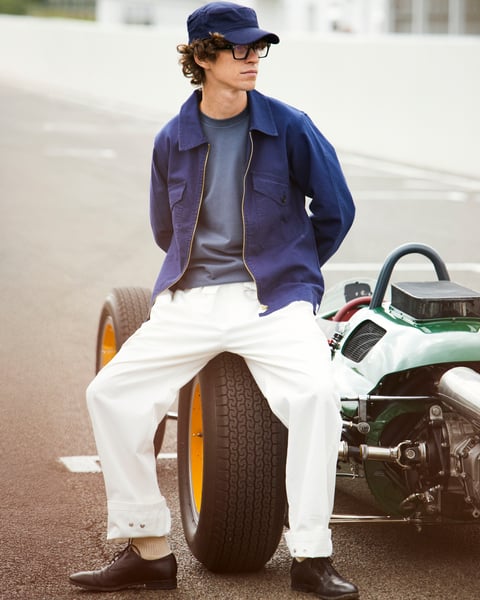A century of the Rolls-Royce Phantom | Frankel’s Insight
 Andrew Frankel
Andrew Frankel
It was 2003, and in a certain (admittedly quite small) corner of the world, we were on tenterhooks. A new Rolls-Royce Phantom was going to be launched.
But this was so much more than the next in a line of cars that in 2025 celebrates its centenary and extends yet again its record as the most enduring nameplate in the entire automotive world. Not only was it that the 2003 Phantom was the first new Rolls-Royce to be so called in 35 years, more pertinently still it was the first to be launched since BMW took over the rights to build a car with two interlocked ‘R’s on its prow.

There is no question that some were eager for it to fail. BMW’s stewardship of Rover had not gone well and, they argued, if it handled the Rolls-Royce brand with the same crass care then Rolls was already as good as dead anyway.
But BMW defied its doubters and produced a car that proved it not only understood exactly what a Rolls-Royce needed to be, but that it understood far better than the marque’s previous custodians who’d near enough run it into the ground.
Second only to the original Ghost, that Phantom was the most important car in Rolls-Royce history, soon re-establishing it as it was always presumed to be – ‘the best car in the world’, at least for those who define such matters in terms of ride, refinement and opulence. Those who took such evident glee in predicting its downfall 22 years ago eat their words to this day.
A hundred years ago, the original Phantom, first introduced as the ‘New Phantom’ despite there being no ‘old’ Phantom, was actually not that different to the fabled Ghost it sought to replace. Despite being very similar in layout, based on an evolved chassis with an enlarged near 7.7-litre engine, the first Phantom somehow lacked the Ghost’s charm.
I drove one once, and having been brought up on Bentleys could scarcely believe how slow and cumbersome it felt by comparison. And Sir Henry must have known he could do better because, having launched in 1925, the car was replaced after just four years in production.
Its replacement, the Phantom II, was far more like it though at first it’s hard to see why. Similar in size and layout with a developed version of the same engine, on paper it looked like a mild update. But beneath all that coachbuilt bodywork lay a brand new chassis with much better suspension, steering and crucially, a lower centre of gravity.
It drove like a different car entirely – even more refined, no less comfortable but actually quite rewarding and far more nimble, if you can even use such a word in the same sentence as ‘Phantom’. I only drove one briefly, but I was aware at the time that this, and not its predecessor, was the true successor to the fabulous Ghost.
I never drove a Phantom III but how I would like to, it being the first and only V12 Rolls until the unworthy Seraph of 1998. Although the war limited production to four short years, it’s an immensely significant Rolls, not least as being the last in which Sir Henry Royce had any involvement.
The V12 was used not for romantic reasons but because it was a design Rolls knew well from its involvement with aero engines, it allowed the company to keep pace with multi-cylinder rivals from across the pond and, perhaps most persuasive of all, it allowed more power to be developed from a smaller capacity and with a smaller footprint under the bonnet than the old straight-six.
Ironically, it became most well-known decades after production had ceased when a 1937 Sedanca de Ville was chosen as Auric Goldfinger’s transport in the eponymous 1964 Bond caper.
The Phantom IV is something of a curio, with a mere 18 being produced over a six-year period, but it is important because it was the first Rolls to be used by the Royal Family, wresting this prized accolade from Daimler which had held the Royal Warrant since the turn of the century.
It is also the only Rolls to use a straight-eight engine and the only one to use an engine whose first application was in an armoured car. It was a car intended, like the Bugatti Type 41 ‘Royale’, exclusively for royalty and heads of state, and the first one became the very first Rolls-Royce State Limousine which remains with the household to this day, most notably being wheeled out for the wedding of the now Prince and Princess of Wales.
Three years after the last Phantom IV was delivered in 1956, the Phantom was back in normal production for its fifth iteration. Bought by a wide range of well-heeled individuals, it was complete with Rolls’ brand new V8 engine and a chassis developed from Silver Cloud II.
It duly begat the visually almost indistinguishable and mechanically very similar Phantom VI which somehow kept in (albeit very limited) production until 1990, still with body-on-frame construction some 25 years after Rolls-Royce had embraced full monocoque construction for the Silver Shadow.
Another 13 years and a change of ownership would follow before the modern and enduring history of the Rolls-Royce Phantom would return. A century on, we’re now on the eighth-generation car, with every sign that the name will continue to endure not for years, but decades into the future.
road
news
frankel's insight
Rolls-Royce
phantom










